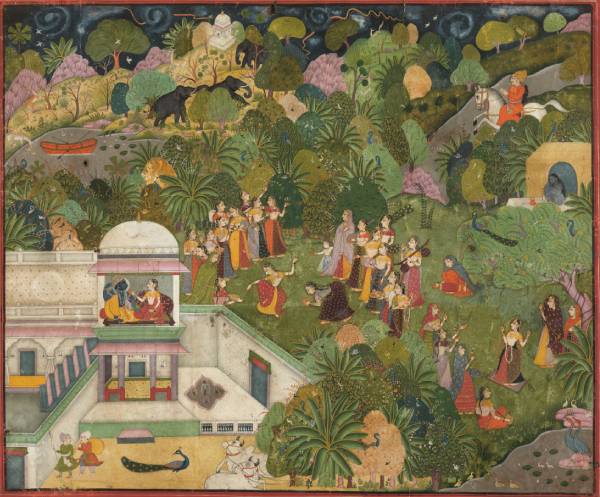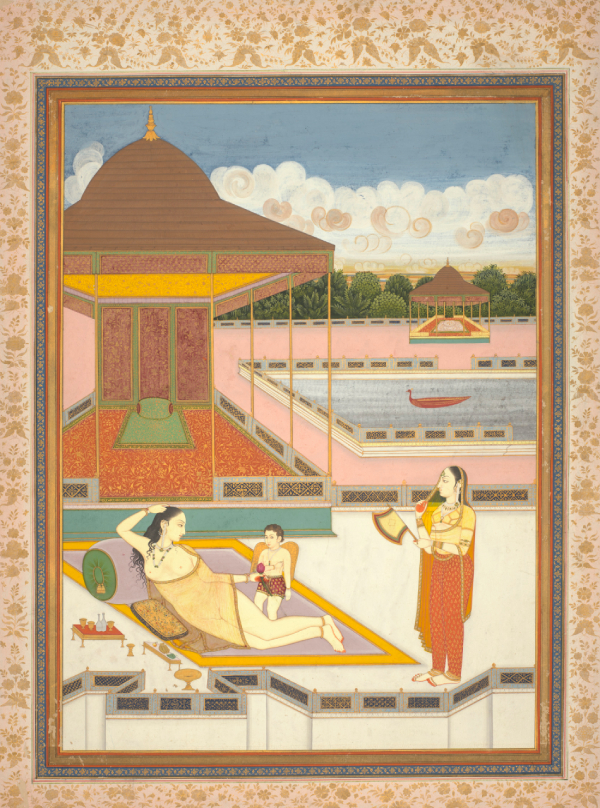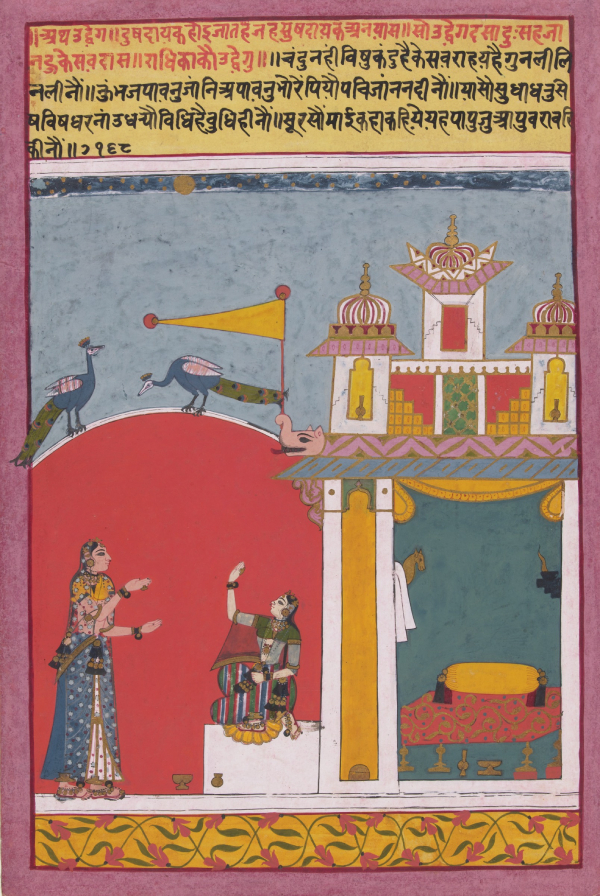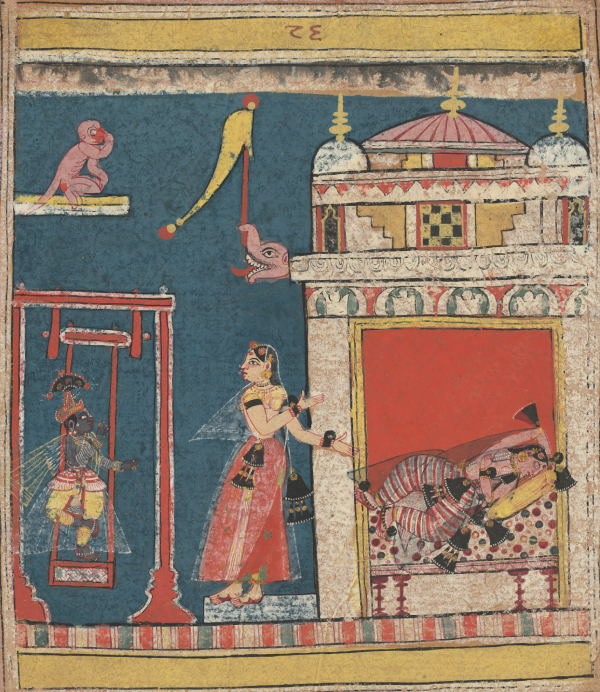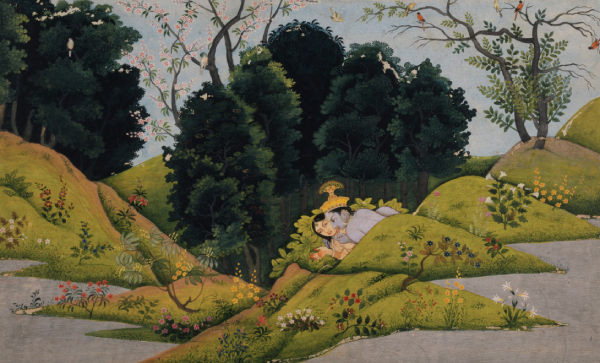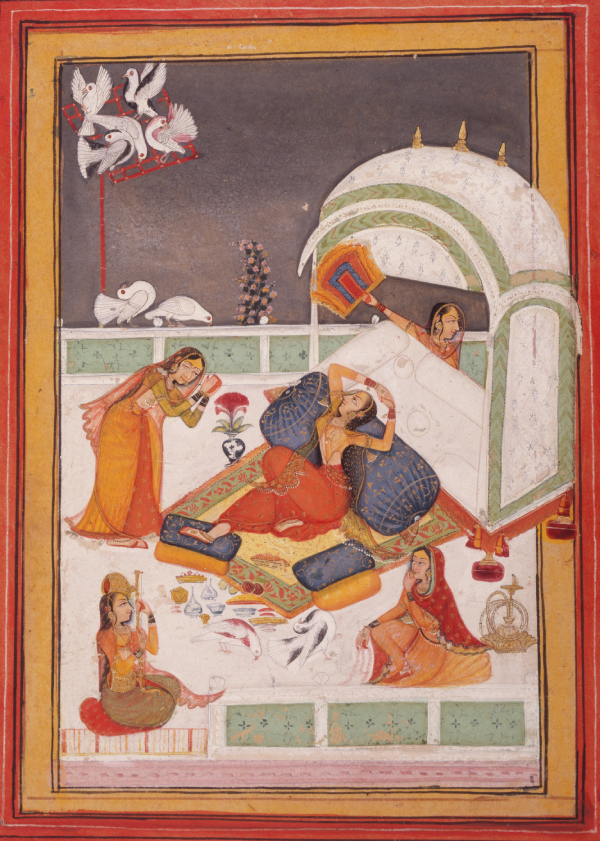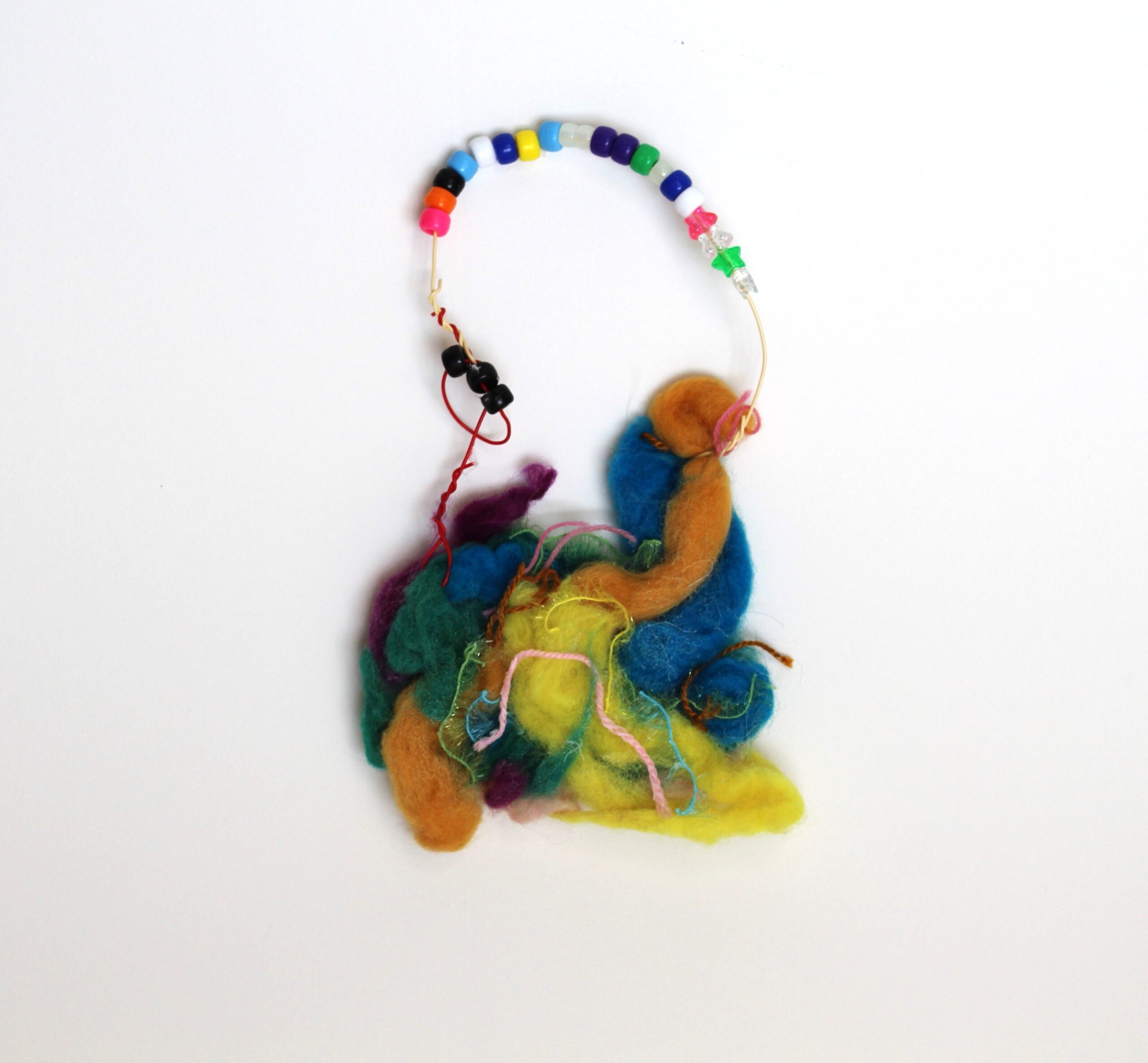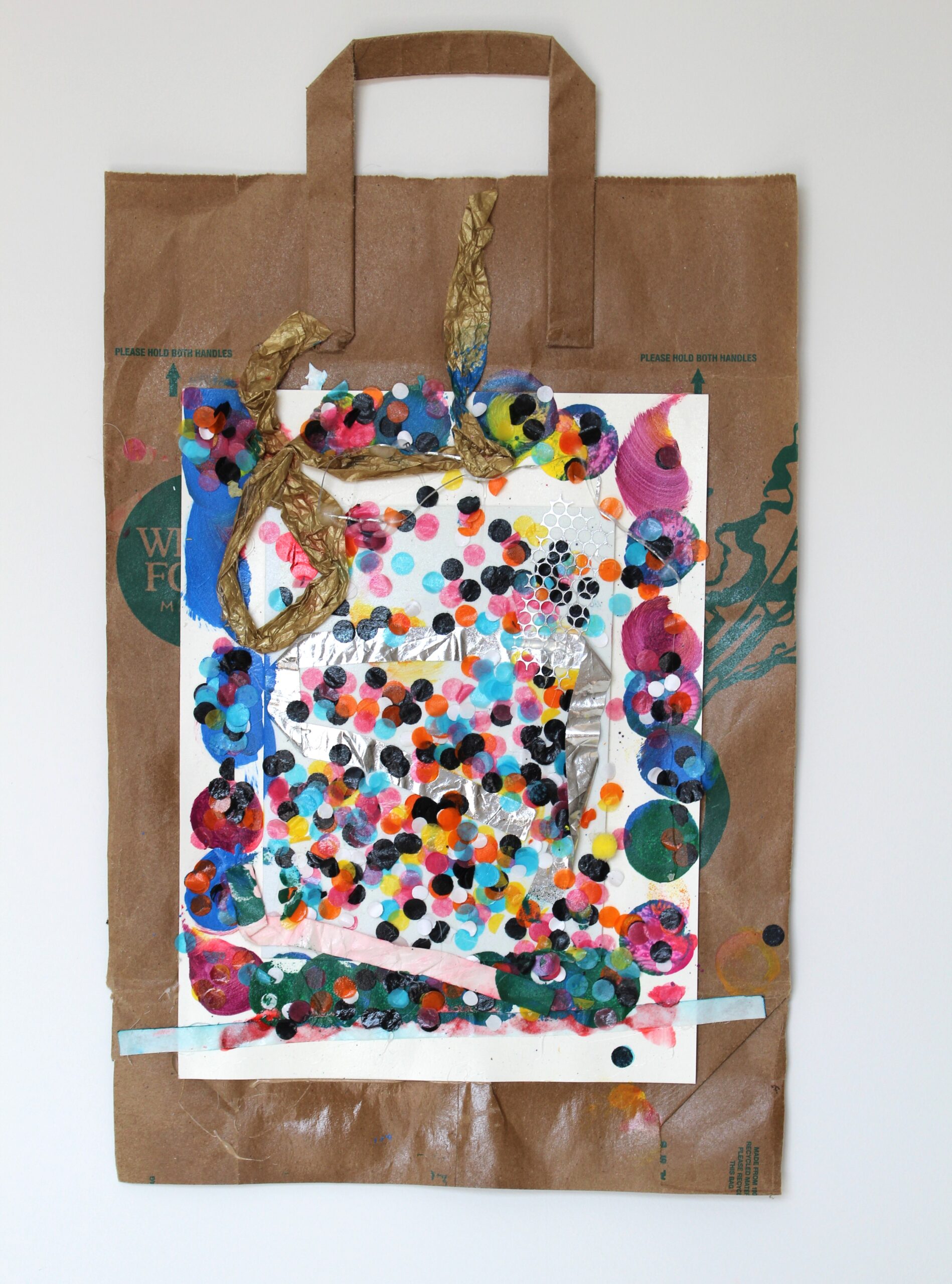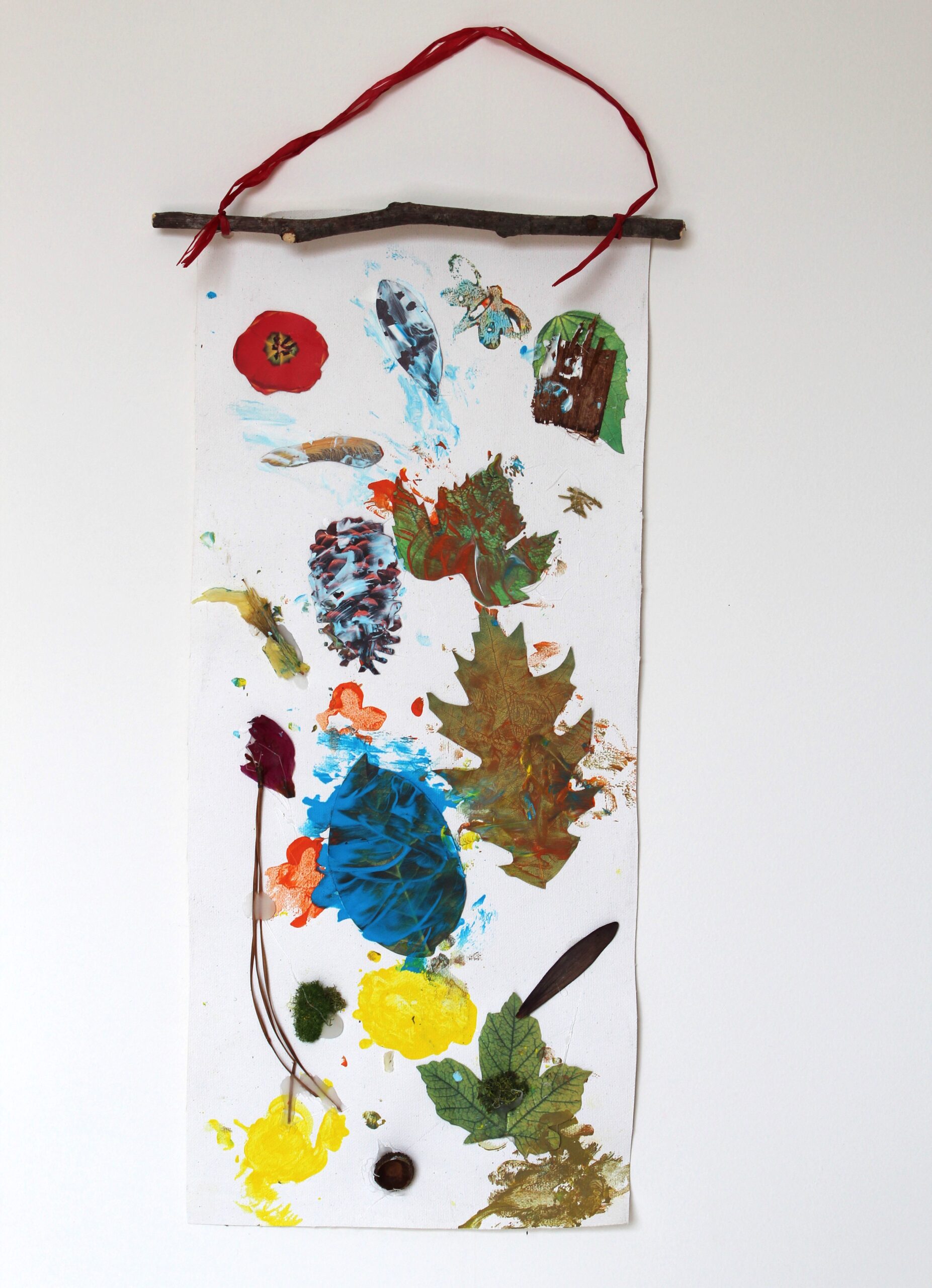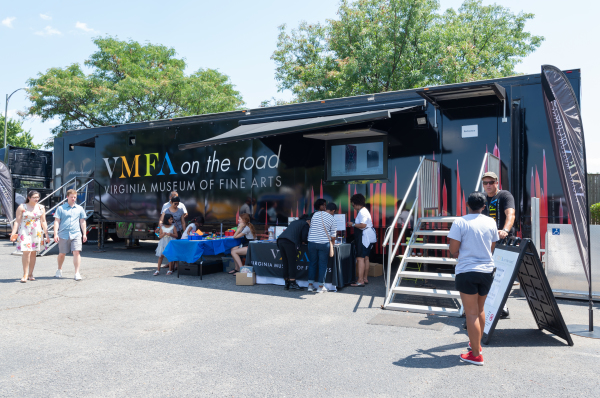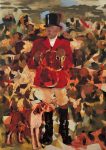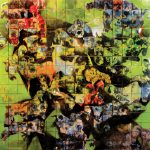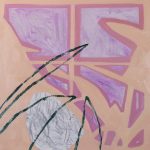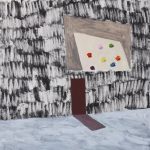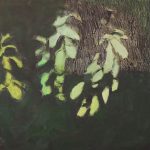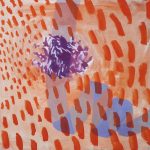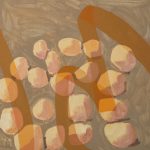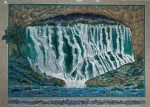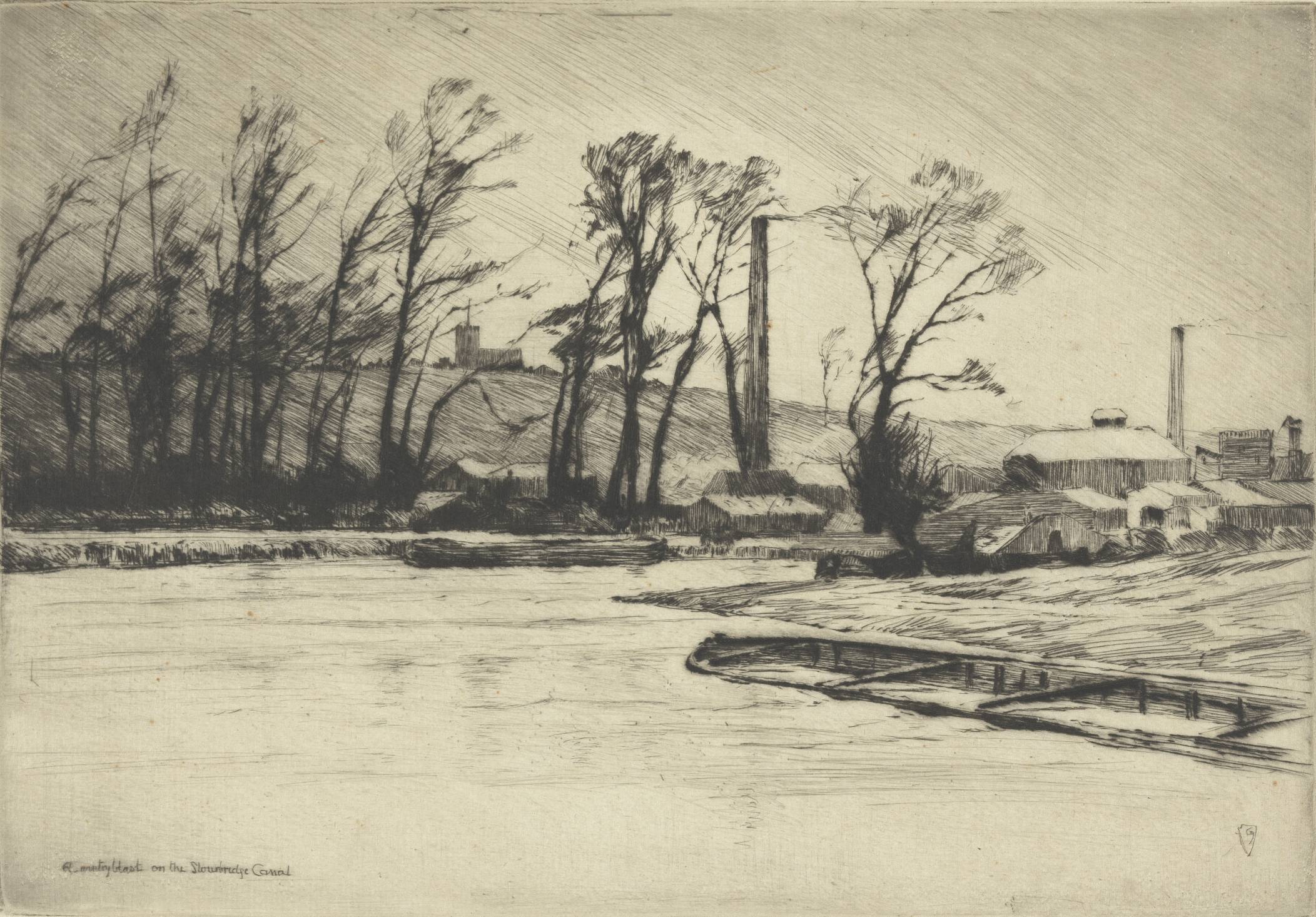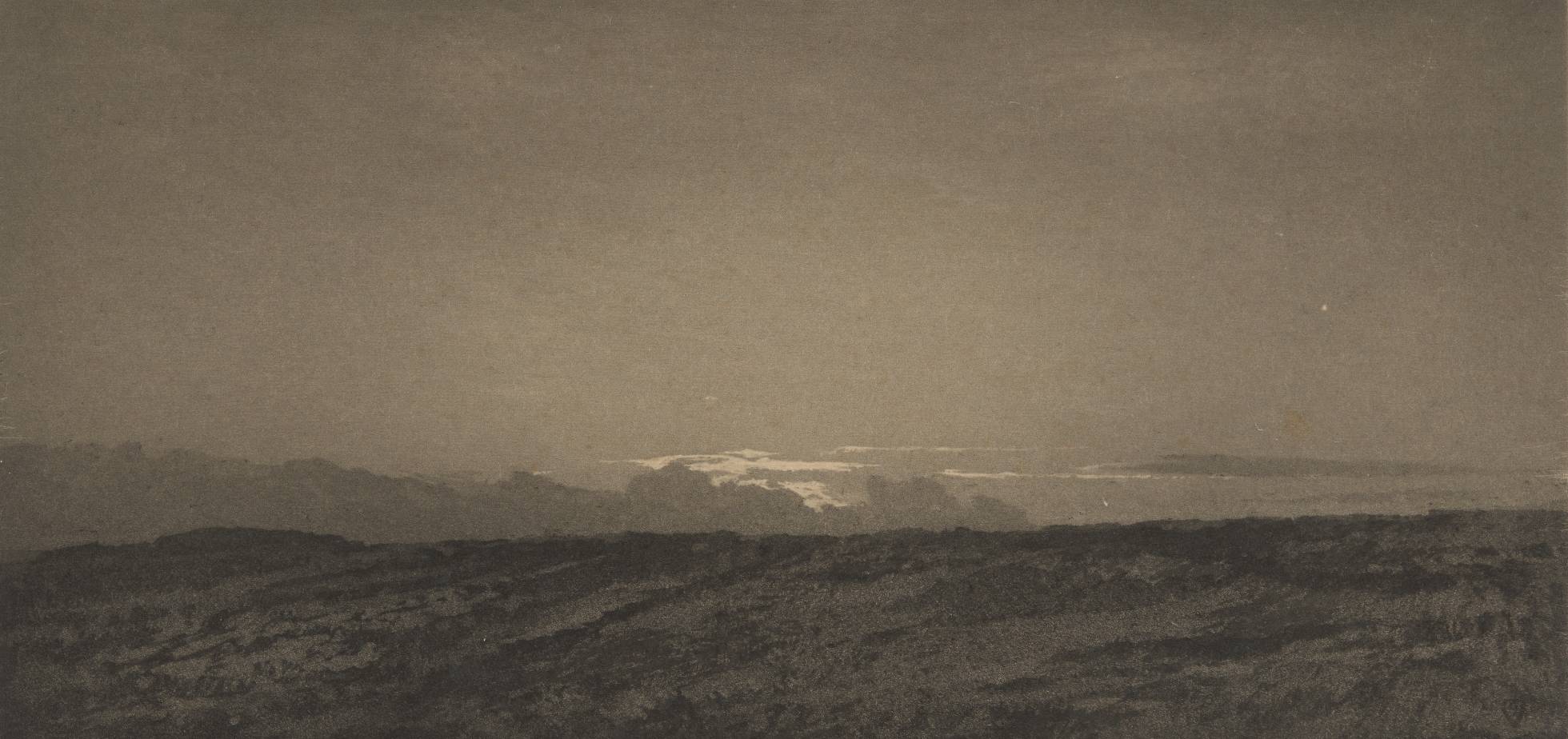Explore la guitarra como sujeto visual, símbolo imperecedero y compañera de narradores. Rasgueada en todas partes, desde salones a porches pasando por manifestaciones y estadios de rock–la guitarra aparece también de forma muy extendida en el arte americano. Las representaciones de este instrumento permiten a los artistas y a sus modelos tratar temas que, de otro modo, se omitirían o tergiversarían. Descubra pinturas, esculturas, obras en papel y música en una presentación multimedia que desentraña la importancia cultural de la guitarra, ilustrando temas de clase, género, raza, etnicidad e identidad.
Cuerdas historiadas: La guitarra en el arte americano es la primera exposición que explora el simbolismo del instrumento en el arte americano desde los inicios del siglo XIX hasta nuestros días. La muestra, que acoge 125 obras de arte, así como 35 instrumentos musicales, demuestra que las guitarras figuran prominentemente en las historias visuales que los americanos se cuentan a sí mismos sobre sí mismos–sus historias, identidades y aspiraciones. La guitarra–portátil, económica y omnipresente–aparece en el arte americano más que cualquier otro instrumento, y esta exposición explora esas representaciones, así como las ambiciones, intenciones y conexiones humanas que el instrumento posibilita–una herramienta poderosa y un emblema elástico.
Las obras en Cuerdas historiadas están agrupadas en nueve secciones: Representando estéticamente un motivo; Dinero contante y sonante; Hispanización; Juegos de salón; Personificación; Retratando la actuación; Guitarras políticas; La guitarra en la cultura y el arte afroamericanos; Reconsiderando el género de los instrumentos. La exposición también incluye espacios más pequeños organizados por temas, entre los que se encuentran: El blues; Las mujeres en los inicios del género country; La cultura visual del rock and roll primitivo; Hawaii-na; y Guitarras cowboys.
El catálogo de 300 páginas que acompaña esta exposición coloca a la guitarra en un nexo de arte, música, literatura e historias culturales. Tras su paso por el Museo de Bellas Artes de Virginia, Cuerdas historiadas: La guitarra en el arte americano viajará al Museo Frist de Arte de Nashville, donde estaré expuesta desde el 26 de mayo hasta el 13 de agosto de 2023.
Las Richmond Sessions ’22–‘23
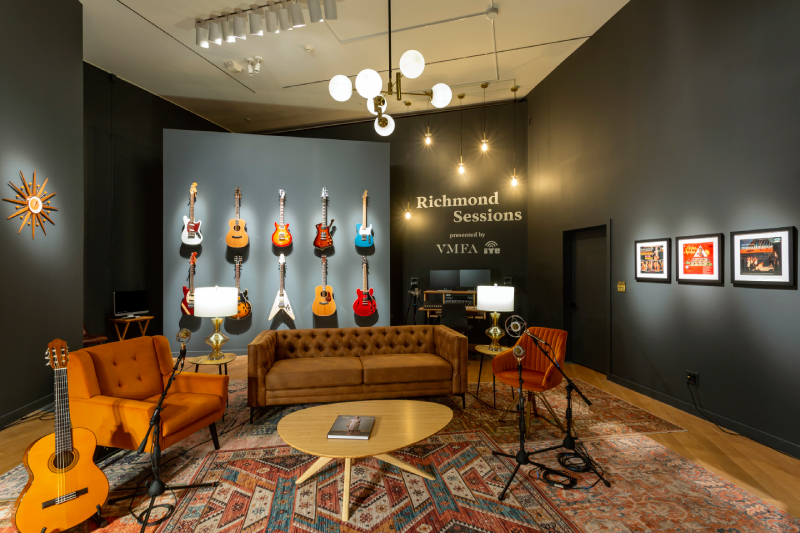
El VMFA presenta las Richmond Sessions ’22–’23, una serie de grabaciones de estudio a cargo de una ecléctica lista de guitarristas que actúan en la exposición Cuerdas historiadas: La guitarra en el arte americano. El estudio, construido especialmente para la ocasión, y las sessions, inspiradas en las Bristol Sessions, amplían la exploración que la exposición hace de la guitarra como sujeto, símbolo y compañera de narradores. Explore el programa completo de las Richmond Sessions.
|
Lo más destacado
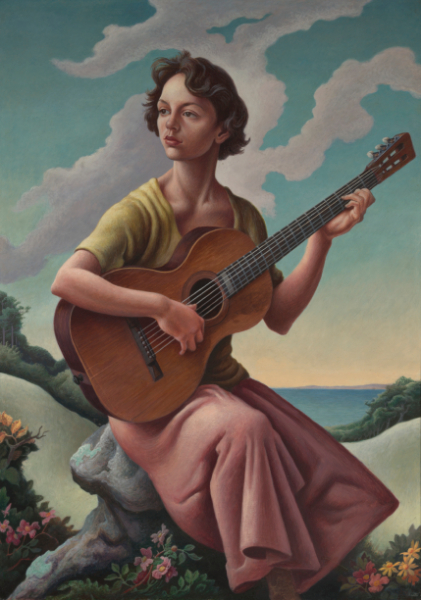 Jessie with Guitar, 1957, Thomas Hart Benton (American, 1889–1975), oil on canvas, 42 x 30 ½ in. Jessie Benton Collection © 2022 T.H. and R.P. Benton Trusts / Licensed by Artists Rights Society (ARS), New York.
Jessie with Guitar, 1957, Thomas Hart Benton (American, 1889–1975), oil on canvas, 42 x 30 ½ in. Jessie Benton Collection © 2022 T.H. and R.P. Benton Trusts / Licensed by Artists Rights Society (ARS), New York.
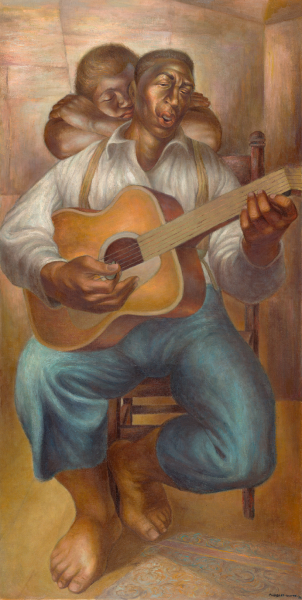 Goodnight Irene, 1952, Charles White (American, 1918–1979), oil on canvas, Nelson-Atkins Museum of Art, 2014.28. © The Charles White Archives.
Goodnight Irene, 1952, Charles White (American, 1918–1979), oil on canvas, Nelson-Atkins Museum of Art, 2014.28. © The Charles White Archives.
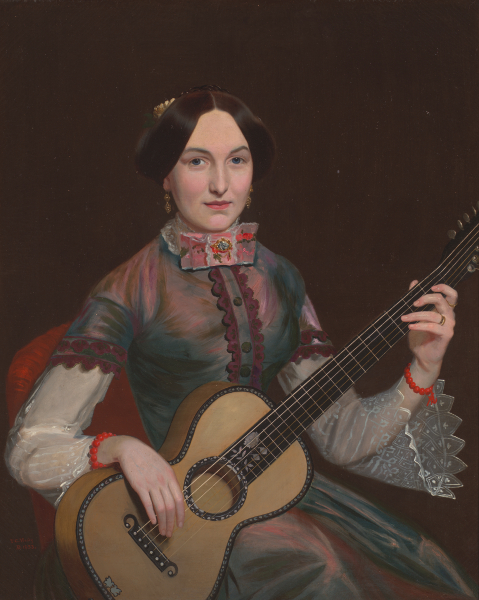 Charlotte Davis Wylie, 1853, Thomas Cantwell Healy (American, 1820–1889), oil on canvas, 44 ¾ x 38 ¼ in. Collection of Charlotte Boehmer Fraisse, Ocean Springs, Mississippi, From the Estate of Mary Swords Boehmer.
Charlotte Davis Wylie, 1853, Thomas Cantwell Healy (American, 1820–1889), oil on canvas, 44 ¾ x 38 ¼ in. Collection of Charlotte Boehmer Fraisse, Ocean Springs, Mississippi, From the Estate of Mary Swords Boehmer.
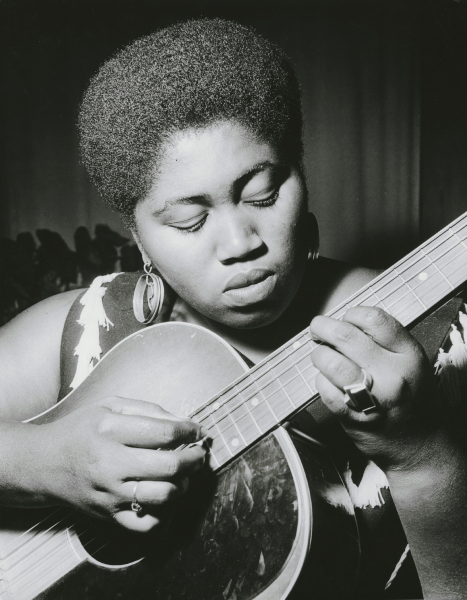 Odetta, 1958, Otto Hagel (American, b. Germany, 1909–1973), gelatin silver print, 13 9/16 x 10 9/16 in. Center for Creative Photography, University of Arizona, Hansel Mieth/Otto Hagel Archive, 98.117.66. © Center for Creative Photography, The University of Arizona Foundation.
Odetta, 1958, Otto Hagel (American, b. Germany, 1909–1973), gelatin silver print, 13 9/16 x 10 9/16 in. Center for Creative Photography, University of Arizona, Hansel Mieth/Otto Hagel Archive, 98.117.66. © Center for Creative Photography, The University of Arizona Foundation.
 Julie, 2006, Sue Hudelson (American, b. 1967), digital print, 22 x 16 in. Courtesy of the artist.
Julie, 2006, Sue Hudelson (American, b. 1967), digital print, 22 x 16 in. Courtesy of the artist.
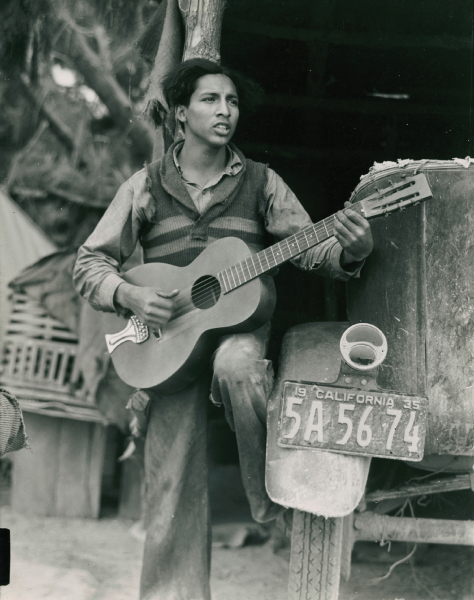 Coachella Valley—Mexican Laborers around Camp, 1935, Dorothea Lange (American, 1895–1965), gelatin silver print, 9 15/16 x 8 in. © The Dorothea Lange Collection, Oakland Museum of California. Gift of Paul S. Taylor, A67.137.94601.
Coachella Valley—Mexican Laborers around Camp, 1935, Dorothea Lange (American, 1895–1965), gelatin silver print, 9 15/16 x 8 in. © The Dorothea Lange Collection, Oakland Museum of California. Gift of Paul S. Taylor, A67.137.94601.
La cerveza rubia Cuerdas historiadas de la Cervecería Starr Hill
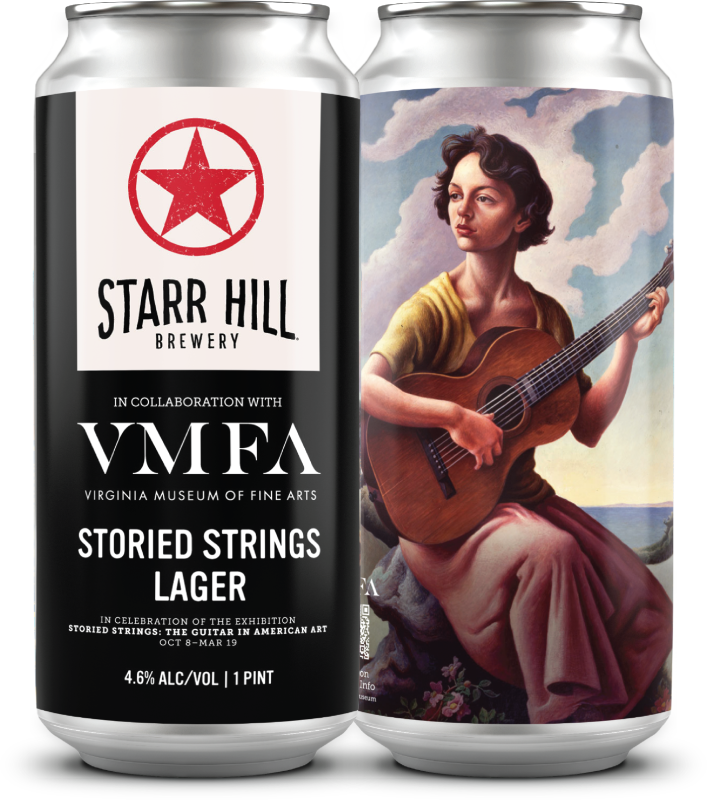
Estamos muy contentos de poder anunciar que la Cervecería Starr Hill y el VMFA se han asociado para ofrecerles una cerveza de edición limitada con motivo de la exposición Cuerdas historiadas. La cerveza Cuerdas historiadas está disponible desde el 1 de octubre en el VMFA y en cualquiera de las seis cervecerías Starr Hill existentes en Virginia.
|
Cuerdas historiadas: La guitarra en el arte americano está organizada por el Museo de Bellas Artes de Virginia. La exposición ha sido comisariada por el Dr. Leo Mazow, Conservador Louise B. and J. Harwood Cochrane de Arte Americano del VMFA.
The Louise B. and J. Harwood Cochrane Center for American Art
Lettie Pate Whitehead Evans Exhibition Endowment
Julia Louise Reynolds Fund
Nancy and Wayne Chasen
Community Foundation for a greater Richmond
Mr. and Mrs. Thomas F. Garner, Jr.
Dr. and Mrs. William V. Garner
Troutman Pepper
Wyeth Foundation for American Art
YouDecide
Robert Lehman Foundation
Peachtree House Foundation
Birch Douglass
Hamilton Beach Brands, Inc.
An Anonymous Donor
VMFA is also grateful to the following sponsors:
Fralin Pickups, LLC | Dr. and Mrs. Michael Godin | Sherrie Page Guyer and Raymond A. Guyer III | Karen and Pat Kelly | Curry and Lindsey Motley | Pamela and Fred Palmore | Dr. and Mrs. R. P. Sowers III | Tredway S. Spratley and Janine M. Collins | Don and Pia Steinbrugge | Courtenay S. Welton II
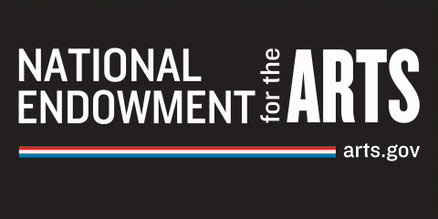
This project is supported in part by the National Endowment for the Arts
Esta lista representa los patrocinadores con fecha September 27, 2022.
Jessie with Guitar, 1957, Thomas Hart Benton (American, 1889–1975), oil on canvas, 42 x 30 ½ in. Jessie Benton Collection © 2022 T.H. and R.P. Benton Trusts / Licensed by Artists Rights Society (ARS), New York

